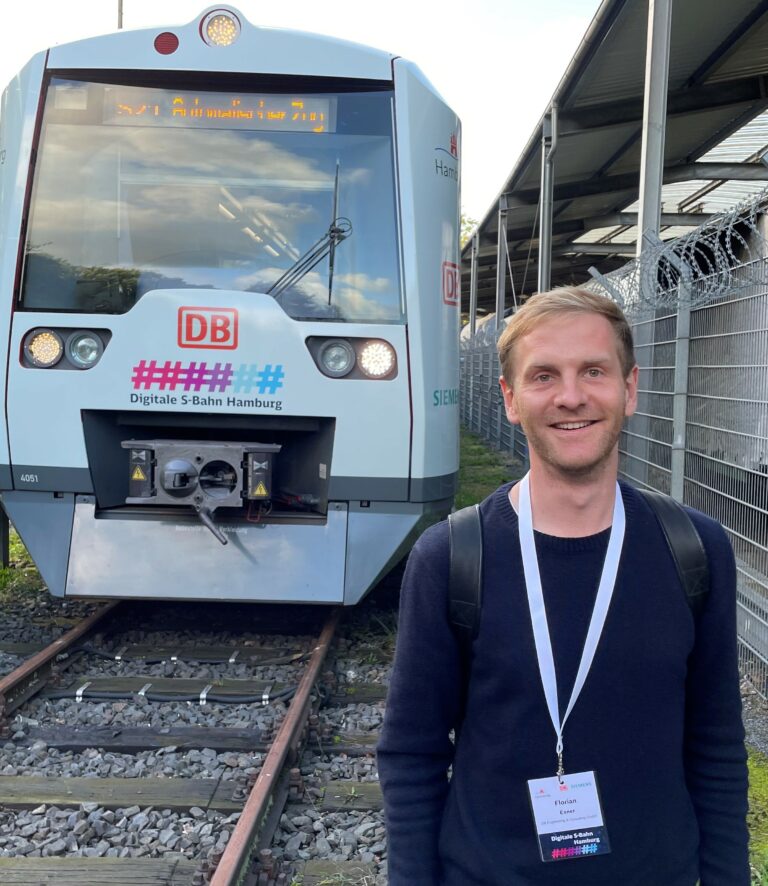It has become one of the most exciting and spectacular bridge-building projects of recent years: the new Ruhr Canal bridge between Duisburg and Mülheim has been put into operation. Deutsche Bahn invested around EUR 30 million in the project. DB Engineering & Consulting was responsible for the construction supervision.

Contact
DB Engineering & Consulting
EUREF-Campus 14
10829 Berlin
Germany
Free-flowing rail transport for the next 100 years
Not many people know that Duisburg is a city of bridges and has more bridges than Venice or St. Petersburg. Some of these bridges are already approaching the end of their service lives – such as the old truss bridge over the Ruhr Canal built in 1925, which is mainly used for long-distance passenger transport on the Duisburg/Mülheim (a.d.R.) line.
Deutsche Bahn invested EUR 30 million in refurbishing this structure last year – EUR 15 million of which went on the construction of the replacement bridge. The objective was and is, for the new rail bridge to ensure free-flowing rail operations for at least the next one hundred years. The structure crosses the Ruhr Canal, the L140 highway as well as a cycle track and footpath.
.
A colossus is created from 1,600 metric tons of steel
The steel construction of the bridge weighing 1,600 metric tons consists of more than 100 individual parts, which came from Poland via special and heavy transport deliveries. These components were inspected and then permanently installed and connected in situ at the construction site. Particularly important weld seams were inspected using ultrasound and x-ray technology. The steel colossus is 137 m long, 14.65 m high and 8.29 m wide. Due to the gigantic dimensions, design work started four years ago.
Rolling and floating 1,600 metric tons of material into place
The final construction – particularly for a structure of this size – was unusually rare and spectacular. In August 2019, self-propelled modular transporters (SPMTs) were used to move the bridge out across the canal, where pontoons were in place to receive it. It was then rotated 90° and floated to its final position to be mounted on its abutments.
To guarantee sufficient stability for these abutments, some 200 foundation piles of 1.20 m diameter and up to 8 m long had to be placed in the ground below. Replacing the bridge involved laying 200 m of new track and 500 m of overhead line.
Construction supervised by DB Engineering & Consulting
DB Engineering & Consulting monitored the entire project – including the dismantling of the two old superstructures with central pillars, building the new bridge and its technically-sophisticated installation during the six-week summer work window, and the subsequent re-cultivation of the construction site area.
Concerning the special challenges of the project, Fabio Lopez Köhn, project manager of the Duisburg Construction Supervision Center, said, “To move such a bridge simultaneously across the road with special vehicles and on the canal with pontoons to eventually bring it precisely to its defined end position is certainly something special and an impressive experience. And if this task is completed without accidents and in the specified timeframe, then we’re even happier.”
But this new bridge is just the start for Deutsche Bahn: in the years to come, three more bridges over the Ruhr between Duisburg and Mülheim need to be replaced. The old bridges were all built in the 1920s.





